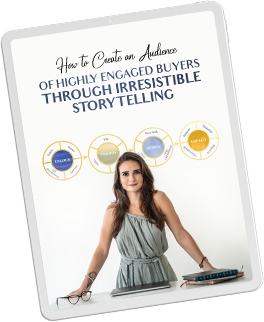Something about the words “personal branding” has always made me feel icky. After years of working in the advertising world, I associated branding with fabricating an image that wasn’t real in order to convince people to buy a product they didn’t need. I didn’t understand why anyone would want to do that for themselves.
Then, I spent almost a year traveling the world for a social experiment I designed, in which I tested how many people who connected to me through my social network were willing to host me along the way. The locals (mostly strangers) I reached out to needed to know who I was in order to feel comfortable opening their homes up to me. Friends and family wanted to understand why on earth I’d quit my corporate career in New York City to do this. I suspected potential employers would also ask questions. Before I knew it, I was creating a personal brand to properly communicate who I was, what I was doing, and why to my audience.
I created a blog, The Nomad’s Oasis, and strategically began documenting my journey, stories, and encounters online. As I moved from country to country, my audience grew and opportunities trickled in. By the time I completed my circumnavigation nine months later, I had built a loyal social media following, was featured in and wrote for several large publications, and was working with small businesses and entrepreneurs around the world to help them build their brand identity.
My experience taught me that personal branding doesn’t have to be about selling some fake persona that people will like. It can also be about identifying and bringing to life the best version of yourself.
The secret behind building a personal brand that sells but doesn’t make you feel like a sell-out is quite simple: find a way to connect with your audience, and do it with integrity. Be someone that people like, not because you’re pretending to be, but because you are. Inspire, grow, and teach others by leading by example. People will want to be like you, because you are actively working towards kicking ass at life. Who doesn’t want that?!

GET ACCESS TO MY FREE MASTERCLASS
How to Create an Audience of Highly Engaged Buyers Through Irresistible Storytelling
I share five tips on how to create a personal brand that feels true to yourself, gets you a step closer to achieving your goals, and, most importantly, generates results:

Differentiate Yourself With A Story That Moves People
If you approach personal branding solely as some marketing tool to get you a better job, that’s all it will ever be. Sure, having a strong personal brand will advance you in your career, but it can do so much more than that. You are not a product: like everyone else on this planet, you are a person with a story to tell. So, what makes your story unique? Why should someone listen to you?
Perhaps you built a business from the ground up, travel the world and work from your laptop, balance kids and a busy work life, or have a side hustle. There doesn’t need to be a groundbreaking achievement for you to have something interesting to share. Tell a story so compelling, resounding, and real that it will resonate your target audience and move them to action– whether that is engaging with your content, following your advice, or making a purchase.
My personal brand started coming together when I told a story that was bigger than just my experiment. My story wasn’t just about a frustrated Millennial quitting her 9-5 corporate job to go travel the world (though that, too): it was about a woman who, after spending years feeling disconnected from a society that prioritizes individualism, set out to prove that meaningful human connection still exists and that people are good and willing to help us achieve our dreams. I built my brand around this story and, as it grew, was able to share my learnings with readers and clients. The best part is, my story is the truth. Nothing about it was fabricated– it was only packaged in a way that was engaging and easily digestible to my audience (that’s where strategy kicks in).
To create a powerful personal brand, choose a story that feels real to you and that you can commit to telling over and over again. In your storytelling, convey who you are and what you stand for: be succinct, relatable, unique, and – most importantly – be human. Don’t be afraid to convey emotion and give your audience a heartfelt reason to feel invested in you.
Leverage Social Media To Provide Your Audience With Value
We live in a world where social media has become an extension of our identity, for better and for worse. How we curate ourselves online can have a direct impact on the opportunities that find us, the influence we exert, and how we are perceived by others.
When it comes to personal branding, effective social media (and digital content in general) is about providing your target audience with value. Ask yourself what you can offer that will be useful to others. Will the content you create serve to inspire, teach new skills, provide tips and tricks, and/or foster a community for people to discuss and connect? Your online presence should foster a relationship with your audience as well as build a reputation that is aligned with your personal brand.
Every piece of content I create on my Instagram and Facebook is designed to inspire, connect with, or engage my audience with a story that supports my personal brand. I treat my social media like a brand portfolio: people can get a good idea of who I am and what I stand for from quickly scanning my channels. This also opens the door to unexpected opportunities. I can’t begin to count how many people have reached out to me with offers for paid work and collaboration because they personally connected with my story and liked how I presented myself online.
An important note: don’t approach social media as a “gain followers” game. Influence is about quality more than quantity. I don’t have an astronomical amount of followers, but I do have a sizeable audience who listens and responds to what I say. You don’t need tens of thousands of followers to be influential. A highly loyal and engaged tribe who is invested in your story is much more valuable than a bunch of people who just follow you because you’re popular.

Authenticity Comes With Practice, Not Guidelines
I’m tired of reading marketing advice about how brands need to “be authentic.” Of course you have to be authentic for people to connect with your brand. You can’t get away with not doing that anymore. Audiences see right through brands when they’re trying to be anything other than what they genuinely are.
The challenge is not being authentic – it’s staying authentic in a world that keeps trying to tell you what to do and who to be. You don’t just wake up and decide, “today, I’m authentic.” Authenticity means consistently standing up for what you believe in, even when it’s not best practice. It is doing your own thing and figuring out what works and feels real through trial and error.
When I started out as a travel blog, I emulated other bloggers’ style, creating content exclusively through the lens of what I thought would make headlines and people would “like.” It didn’t work. I was getting drowned out in the travel blogger world because there were too many people offering a similar product (and doing a much better job).
After many failed attempts for attention, I decided to create content my way: instead of telling people where to go and what to see, I started writing short-form stories about the locals I met while traveling and sharing nuggets of their wisdom. I addressed the messiness of travel rather than the glamour, showed by example how designing a life you’re proud of is worth the struggle, and showcased the role our network can play in helping us achieve our dreams. I was honest and unapologetic in my opinions, I swore, and I got rid of the polished, hyper-curated style I saw from my competitors.
My audience started coming when I got vulnerable and exposed who I really was, as well as who I wanted to be. They weren’t connecting with me because of my photography skills or travel advice – in a sea of Millennials who quit their jobs to become travel bloggers and talk about their awesome lives, I represented a real person who was as honest about my struggles and insecurities as I was about my successes. I realized I couldn’t be authentic as a travel blogger, even though I tried; the authenticity was in the candidness of my writing.
Just because a brand strategy works well for someone, it does not mean it will for you. Develop a style that is uniquely yours, and continue producing what feels natural. No one else in the world can be you, so don’t try to be anyone else. When your message is clear and you practice what you preach, your authenticity will shine through on its own.

Organize Your Content Around A Clear, Defined Vision
Since personal branding is inherently… well… personal, it’s easy to get lost in the midst of all the important information you want to share. You need to make choices about what you’re “selling.” If your messaging addresses everything under the sun and has no organization or structure, it will feel random to your audience. Communication should be simple, tight, and planned to a certain degree so it strategically supports your vision.
I did not wake up one day and decide that I’d quit my job to travel the world and see what happens. My project was planned out months in advance with a long-term vision in mind: by the time I returned, I wanted to have figured out a way to work remotely in a job that I was passionate about. Before setting off on my journey, I meticulously planned out my goals, how I’d pitch myself to publications, and what type of content I needed to create to get people interested in my experiment.
Some people are lucky to stumble upon a brand positioning that works for them, but the truth is, creating a cohesive personal brand takes a lot of work, strategy, and thought. Pick a lane and stay focused on it so that people have a clear idea of what you stand for and why they’re coming to you. For example, my brand propositioning is, “it’s not easy, but it’s worth it.” Everything else that doesn’t fall within these parameters – such as talking about a cool restaurant I found while traveling a certain city – does not get mentioned.
Take an active role in creating a personal brand that honors your vision, rather than randomly pushing out content and hoping it works out. Planning upfront will help tremendously in scaling your brand and spreading your messaging.
Stay Relevant By Constantly Evolving
You may not know exactly what your personal brand is about yet, and that’s ok. You can still share your knowledge, expertise, and insights as you work on the cohesiveness and stickiness of your messaging. It is better to start and tweak along the way than to do nothing at all.
My personal brand today isn’t what it was a year ago. I started as a travel blogger and gradually shifted to identifying as a brand consultant and writer, which gets me much closer to my long-term life and career goals. I wouldn’t have been able to course correct, however, if I didn’t go through months of trial and error. Another year from now, I’m sure I will have pivoted even more. That’s because cultural and audience needs are constantly shifting, personal priorities change, opportunities pop up, and you become more knowledgeable and skilled with practice. It’s important to stay nimble and consistently adapt to internal and external changes: at the end of the day, your personal brand will stick because it’s authentic and creates value for a certain group of people. But, you can’t influence others if you don’t stay relevant.
To figure out what works and what doesn’t, though, you have to take action. While strategy and thought-out marketing plans help tremendously with getting your name out there, your personal brand is not just what you say you are: it is an accumulation of what you do. To create real results in your life and the life of others, treat personal branding as a process of self-development.
Choose a direction, pay attention to what your audience responds to, learn from mistakes, listen to yourself and what you want to accomplish, and do not be afraid to make changes if your vision outgrows your brand. You don’t have to sell out in order to create an image that sells. In the end, what makes personal branding worthwhile is reflected in the people you positively influence and in who you become along the way.
Originally published on Forbes.

Want to become the best story
YOU'VE EVER TOLD?
Get behind-the-scenes weekly insights from me on all things storytelling,
branding, conscious life design, and other fun surprises!

